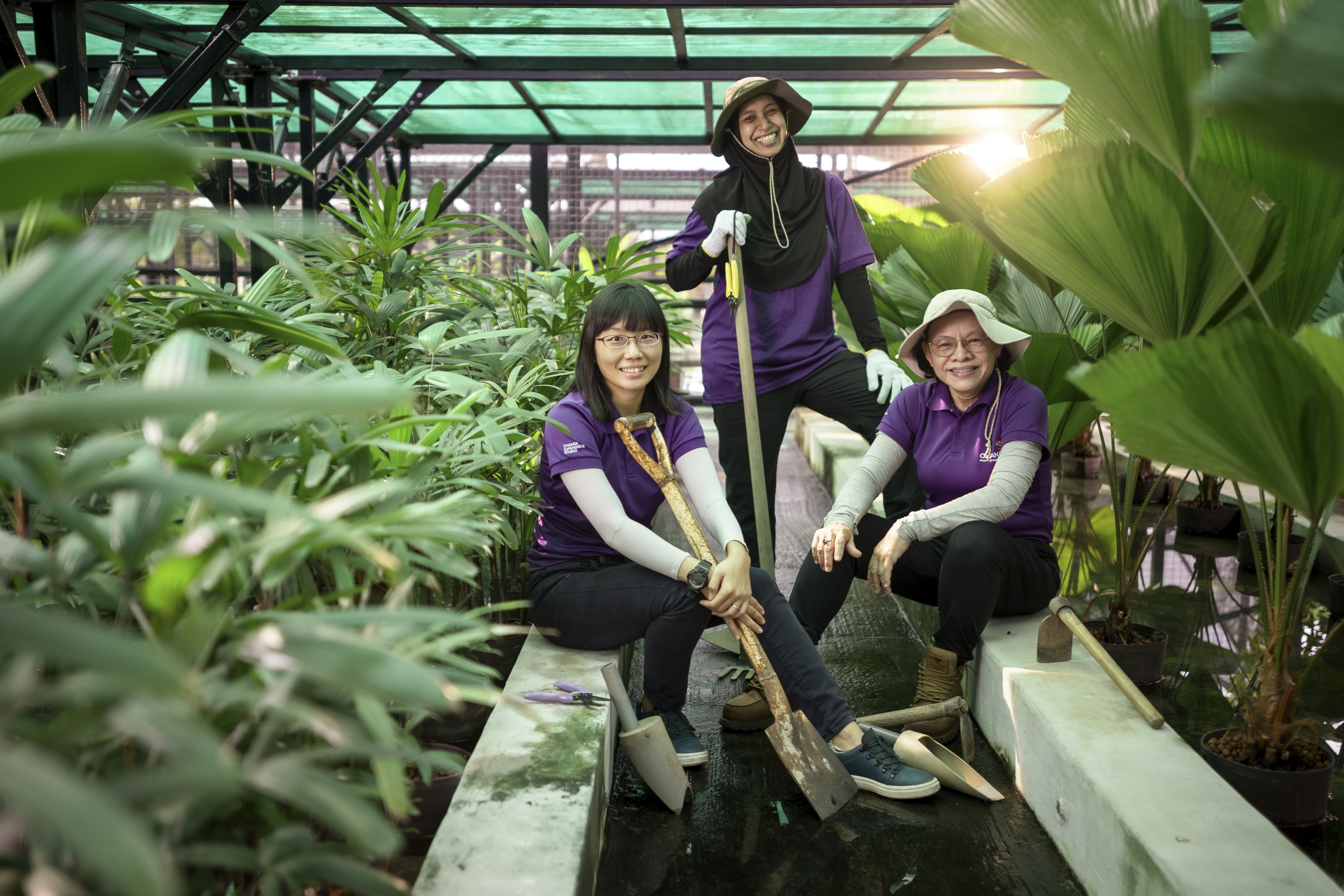© 2025 Changi Airport
From its signature tree-lined Airport Boulevard to the flora in the passenger terminals, CAG’s green efforts are meticulously managed by our in-house Horticulture team. A key support for CAG’s horticultural operations comes in the form of a 2.2-hectare nursery located near the airport.
At the Changi nursery, our Horticulture team adopts a circular practice in its watering cycles. Its open-surface drainage system has been designed to direct rainwater and surface runoff into two collection ponds, which have a combined capacity of 6,900 m3. Water from these ponds is used in the daily irrigation of the nursery plants.

Maintaining a balanced ecosystem
Regular maintenance is critical to stabilise and sustain the ecological balance in the rainwater collection ponds. A proliferation of algae in the pond water can quickly deplete oxygen supply and present unfavourable conditions for plant irrigation.
CAG employs a comprehensive biofiltration system which funnels the collected water through four layers of filter membranes, filtration stones, and UV light to effectively remove algae and other impurities. Additionally, the nursery uses aquatic plants to create natural filtration. Not only do these plants absorb carbon dioxide and release oxygen into the water, they also absorb nitrates, phosphates and other nutrients to keep algae growth in check while maintaining water clarity.
Routine testing and monitoring of the full process ensures that water quality is maintained in the ponds and for nursery irrigation.

Safeguarding public health
Another maintenance focal point for the team is the nursery drains. Keeping these drains clean and dry is a perennial challenge in Singapore’s tropical climate which experiences frequent rainfall during the year.
As the removal of stagnant drain water is vital for safeguarding public health from vector-borne diseases and the use of toxic pest control chemicals, the team conceptualised a smart flushing and cleaning solution to improve the efficiency of the cleaning process. In addition to a daily automatic flushing schedule, weather sensors are also used to calibrate the flushing process based on changing environmental conditions.
The smart flushing system has also successfully controlled and prevented the breeding of mosquitoes on the nursery grounds. On top of this, the smart solution has effectively replaced the use of power jet systems which run on diesel for frequent cleaning, reducing emissions as well. The automated system has enabled the team to save up to 170 man-hours, which is equivalent to 21 man-days, per cleaning cycle.

 Language Select:
Language Select:


